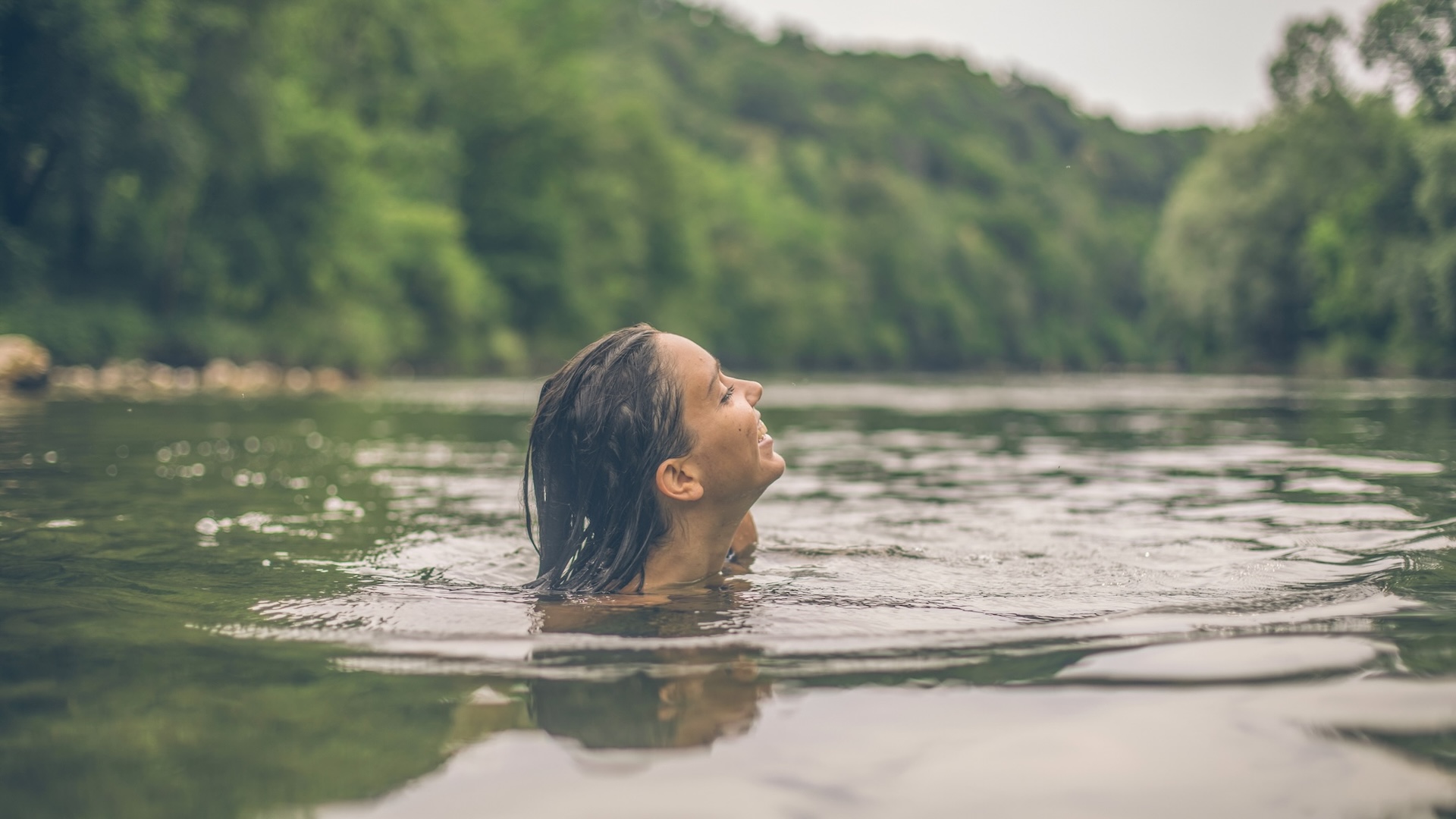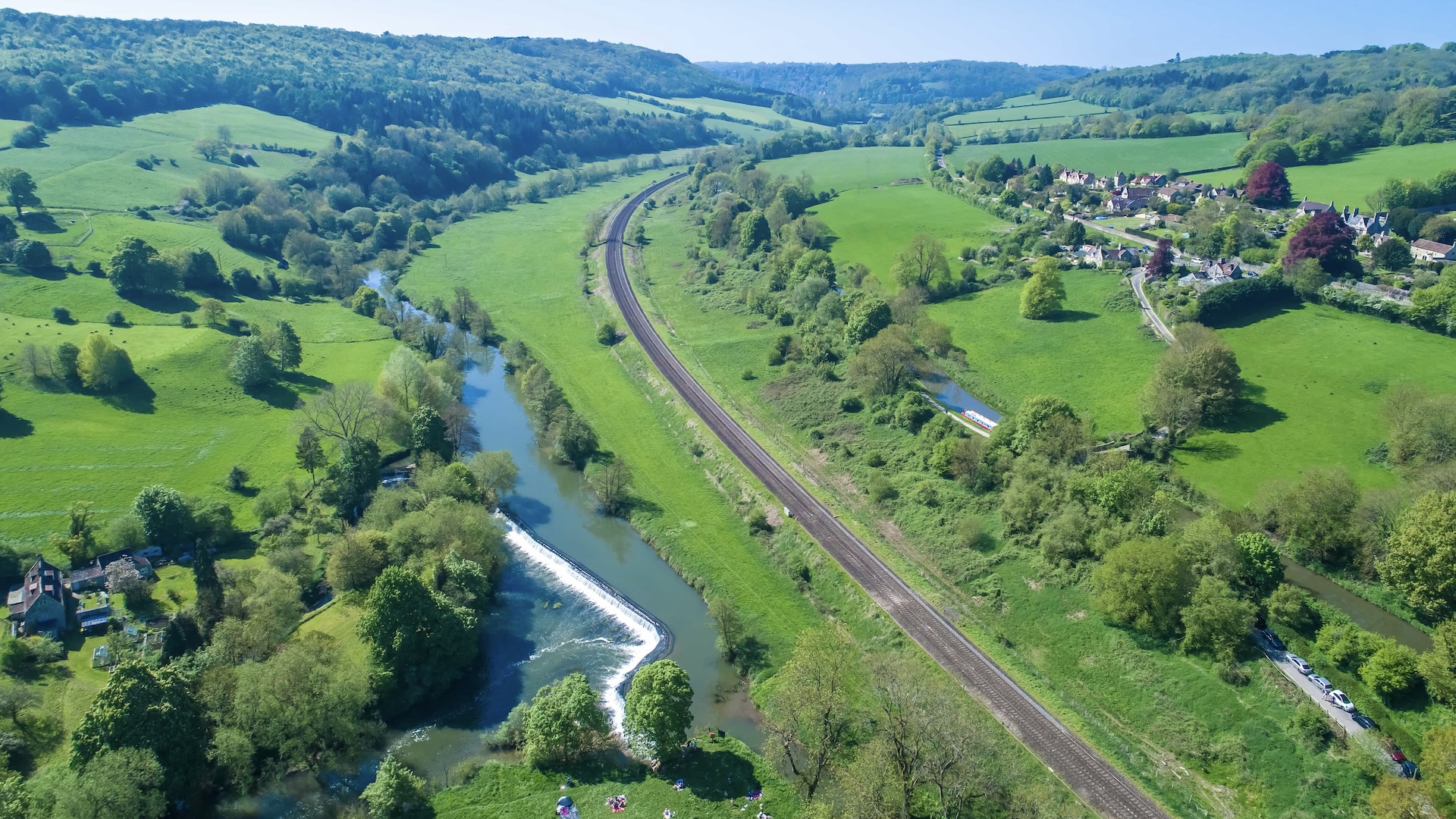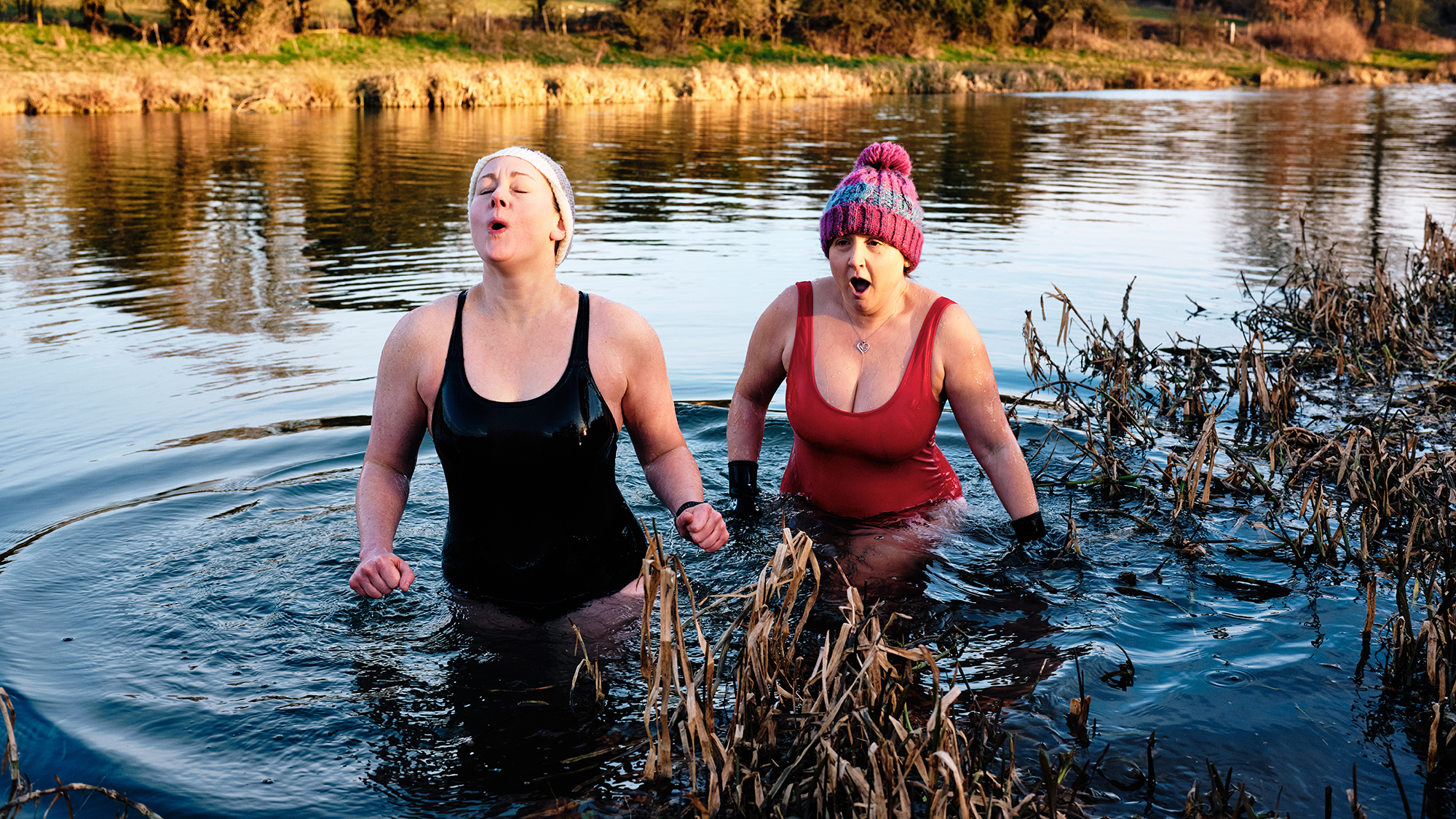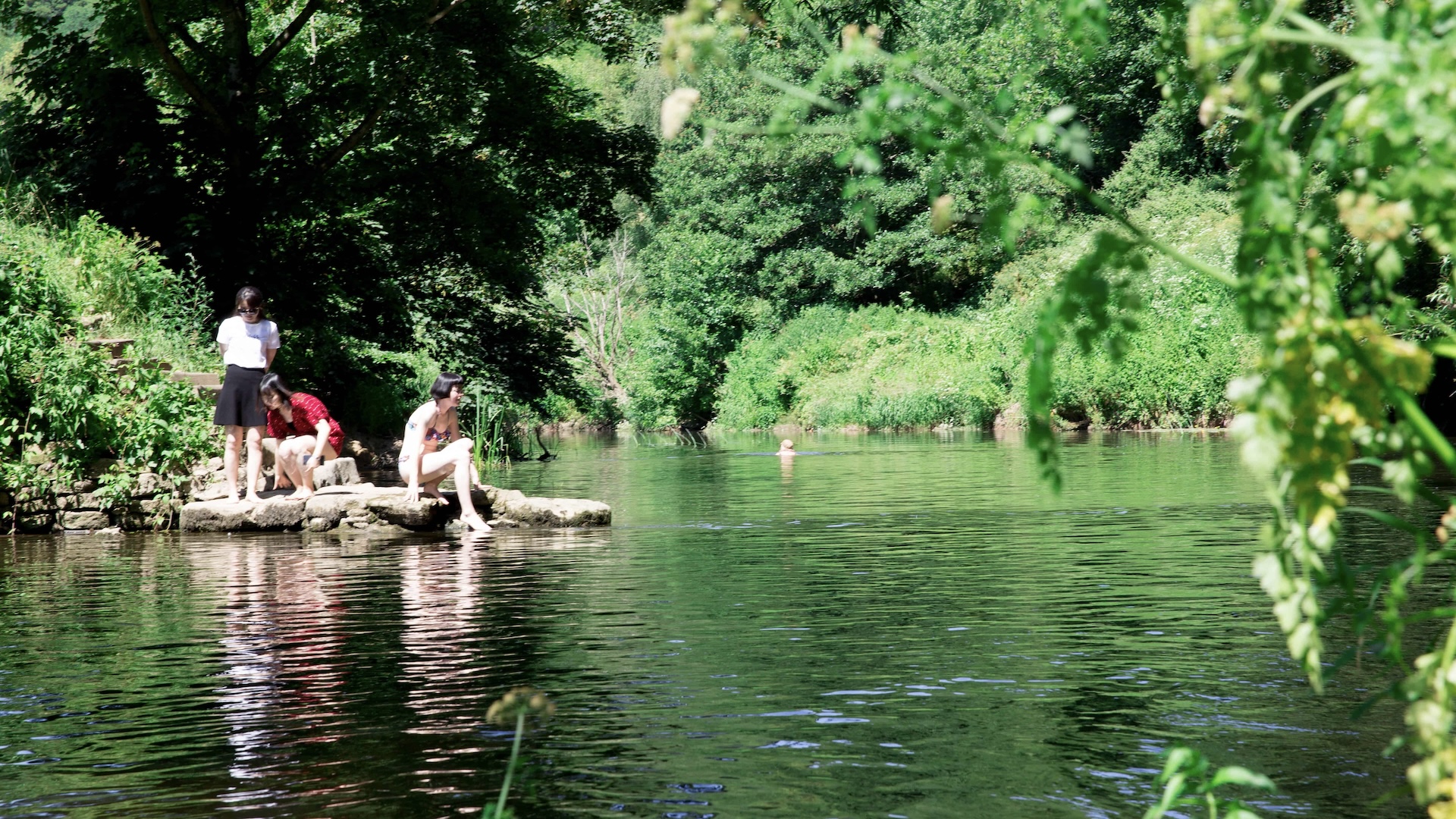
Wild swimming conjures up images of gleeful adventurers taking refreshing dips in cool, clear waters in beautiful locations. In the USA, the UK and beyond we're blessed with breathtaking swim spots – lakes, lochs, rivers, coastal bays – where tranquil waters offer solace from frenetic everyday life.
However, the health risks that swimming in poor-quality water poses means the pastime is not always the antidote we would like it to be. In the UK, pollution levels have rocketed in recent years, and swimmers are increasingly abandoning wild water due to safety fears.
Now Thames Water, which is responsible for water treatment in much of southern England, has been fined almost £123m ($166m), after years of criticism for polluting rivers and lakes with sewage overflow. The move comes just days after company bosses admitted they planned to use part of a £3billion bailout loan to pay huge bonuses to top execs.
It's the largest penalty ever issued by Ofwat, but it does not magic away the issue of the UK's polluted waters.
Here, we take a look at the campaigns calling for safer outdoor swimming conditions – and find out more about a new AI-based water quality monitoring system that is being used in southern England to offer real-time updates to swimmers at several popular swim locations.
AI innovation
In the south of England, UK, a new water-quality monitoring program that uses artificial intelligence (AI) is being hailed by water companies as the way forward for keeping swimmers safe.
A pilot study at Warleigh Weir on the River Avon near Bath – carried out since 2021 by Wessex Water – demonstrated an '87% accuracy rate in predicting high bacterial levels'.
Sensors were installed at the freshwater swimming spot and for six months water samples were repeatedly tested for bacteria levels. AI programs learnt to correlate these readings with patterns in the sensor data, which measured pH, temperature, turbidity (cloudiness), dissolved oxygen and ammonia. Following this period of learning, the AI could reasonably accurately predict when levels of E coli or enterococci were going to be high.
This real-time process is of much greater use to swimmers, who have previously had to rely on water samples that need to be sent to a laboratory for testing, which creates a delay in results. With moving water like rivers, the resulting information can be out of date by the time it's available.
The AI research has formed the basis of a program of installation of sensors at three freshwater sites in Dorset, Somerset and Hampshire, as well as two coastal locations in Bournemouth.
Southern Water is also testing an alternative monitoring approach at two other UK sites.

Real-time reports for swimmers
Wessex Water partnered with the London company UnifAI Technology to develop the software (a webapp), which swimmers can access to get information on bacteria levels, as well as temperature, water level, water flow and rainfall.
Although still in the development phase, Ruth Barden, Wessex Water’s director of Environmental Solutions, has stated: "The webapp is potentially a major breakthrough, giving people near real-time information about river water before they decide whether or not to swim.
"Bacteria will always be present in rivers due to wildlife, run-off from agricultural land, regulated storm overflows and treated sewage discharges. But we want to help the increasing number of wild swimmers and recreational river users make an informed choice.”
Subsequently, one technology observer described the results as a breakthrough that showcases the potential of AI technology in revolutionizing water quality management.
However, there are others who believe the monitoring does not go far enough.
Really, I would much rather see much less sh*t being pumped into our rivers.
Johnny Palmer, owner of swimming spot Warleigh Weir
Johnny Palmer, one of a group of guardians who manage Warleigh Weir, and owner of the private land surrounding it, said: “While Wessex Water says it has risen to demands for better water quality information, it really only amounts to a step in the right direction. I believe they are doing the minimum of what we have been campaigning for.”
He said that the information supplied by the AI-assisted real-time monitoring allows swimmers to make the decision about whether they are happy to swim, but added: “I would like to see the monitoring offering a lot more information on water quality.
“Really, I would much rather see much less sh*t being pumped into our rivers. The water and sewage companies are meant to follow regulations on what they are allowed to discharge into water systems but there is not enough being done to ensure they are sticking to these regulations. Much more needs to be done to improve water safety for swimmers.
“The new AI monitoring system might be seen as a great leap forwards for wild swimmers but it’s not really addressing the root cause of the issue of too much sh*t in our waterways.”

Jail time for water bosses
Alarmingly for swimmers, in July 2024 it was revealed that all water firms in England and Wales were under investigation for sewage spills by the UK’s water and sewage regulator Ofwat.
Another report revealed every English water company has reported data suggesting they have discharged raw sewage when the weather is dry – a practice that is potentially illegal.
UK lawmakers are now taking action and, under new powers that came into force in April 2025, water bosses who cover up or hide illegal sewage spills could face prison sentences of up to two years. However, CEO of campaigning organisation River Action, James Wallace, believes jail time for water bosses remains highly unlikely.
“It’s good to see the government finally taking water pollution seriously, but the law only applies to cover-ups – and there’s no need to hide what’s already happening in plain sight, week in, week out," he said. "Criminal prosecutions under the current legal system take five years or more. What will companies like Thames Water be doing in the meantime? Business as usual: yet more pollution for profit.
“Criminal investigations are welcome, but regulators need urgent access to courts and if the upcoming Spending Review slashes Environment Agency funding, how will it sustain the level of enforcement needed to hold polluters to account – from water companies to factory farms? Tough talk needs backing with real resources.”
Why are swimmers worried?
Standing at the shore of a natural lake or peering into a river from bank, the water might look clear, clean and inviting. But lurking below the water’s surface, there may be a range of nasties that could lead to ill-health for swimmers.
According to the European Environment Agency, one issue for swimmers can be that the water is polluted by bacteria Escherichia coli – or E. coli – and intestinal enterococci that may cause illness. The result could be sickness, nausea, stomach bugs, gastrointestinal illness, as well as respiratory, skin, ear and eye infections.
An expert writing for the The London School of Hygiene & Tropical Medicine added there is also a risk of more severe infections caused by organisms such as drug-resistant strains of E. coli or other pathogens, which can be harder to treat. In some severe cases, E. coli can be lethal.
It’s documented that these bacteria often stem from faecal matter that gets into the water from sources such as untreated waste water, manure, poorly managed septic systems, storm water run-off from land with wildlife and pet droppings, or direct contamination from waterfowl or livestock.
There are a number of other potential water pollutants, too, including parasites, fertilisers, pesticides, pharmaceutical products, nitrates, phosphates, plastics and even radioactive substances.
So, it’s easy to understand why swimmers may be concerned about getting into the water, especially if they end up accidentally ingesting it.
A public health article in December 2022 revealed that a Water Quality Report from marine conservation charity Surfers Against Sewage (SAS) showed the number of swimmers who fell ill after spending time in recreational waters had doubled in the year to September 2022, compared to the previous year.
More recently, there have been a number of reports of suspected pollutants causing illness after people have spent time in, or on, open water. Last April a rower who was taking part in the Boat Race between Oxford and Cambridge claimed that he became ill due to E. coli in the River Thames in London. The rowers – and general public – had been previously warned of high levels of E. coli in the river.
Two months later, another report claimed that poor water quality in the Thames was the cause vomiting and diarrhoea among competitors in a triathlon.
Last year, it was reported that England iconic lake Windermere, was allegedly being regularly blighted by raw sewage from a nearby works, causing what campaigners describe as toxic algae, and killing fish.
Water companies can release untreated sewage into rivers and seas when it rains to prevent it flooding homes, but such spills are illegal when it is dry.
More recently, worries over water quality in southern England have grown as it was announced that the British Government was seeking administrators for Thames Water, the company responsible for water treatment and services across London and the Thames Valley.

What's being done about water quality?
There are regulations that operate in England – and also in Wales and Scotland – with the aim of ensuring that designated 'bathing waters' pass water quality standards set by various environment agencies. The regulations first came into force in 1976, following the introduction of the EU Bathing Waters Directive. The water is tested for both E. coli and intestinal enterococci.
However, campaigners, including those from SAS, claim the safeguards do not go far enough. They would like to see regulations extended across the year and not only in the summer months. They are also calling for testing for a greater range of pollutants; more 'real-time' testing; and more designated 'wild waters'.
The aforementioned Warleigh Weir Project is another campaign initiative. Project leaders make the point that, while the UK currently has more than 600 designated locations with Bathing Water status, few of these apply to rivers.
The Outdoor Swimming Society (OSS) agrees, saying that 'UK designated Bathing Waters are mostly coastal, with only a score of lakes and very few rivers'.
Reassuringly, campaigners have made a difference to the situation in the past year and, in May 2024, 27 new bathing water sites were designated in England, including 12 inland rivers, six tidal rivers, and four lakes. Although, many do not believe this has gone far enough as the UK, lags behind many countries in Europe, and they would like to see the UK aiming for more.

How to avoid swimming in contaminated water
Swimmers in England can check to see if their chosen swim spot is on the list of designated bathing waters. They can also make use of water quality monitoring systems where available.
In addition, there are some common-sense tips, including those from the Outdoor Swimming Society that include: Don’t go in if the water looks like it is not clean – and think about going somewhere else; be more cautious about swimming after heavy rain; don’t swallow water and avoid wearing contact lenses; don’t swim if you have major wounds and cover any cuts or grazes.
Another expert suggests swimmers minimise how much water they swallow, shower soon after swimming and wash their hands before eating if they have been swimming in open water.
No one should be put off reaping the joys of wild swimming, but it clearly pays to be cautious about the water quality.
- Wrap up warm after your wild dip with the best changing robes
- Protect your feet from injury with the best water shoes
- Access safe drinking water during all kinds of adventures with the best water filters and purifiers







